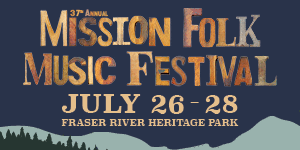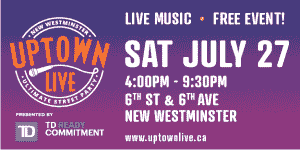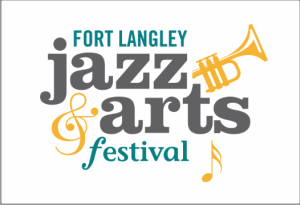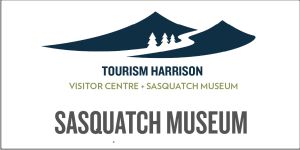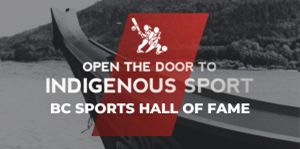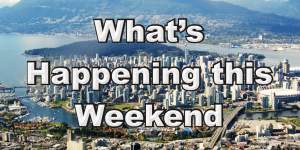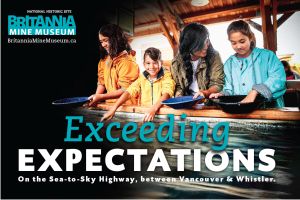
Vancouver ski hills include Grouse, Mt. Seymour and Cypress. Also, just two hours away in opposite directions, there’s Whistler and Sasquatch.
To learn how much snow is on each of the mountains, see our article about Vancouver Ski Hills & Snow Conditions. To learn about the different hills in general, and how they compare, continue reading below.
Vancouver Ski Resorts in 2024
This article discusses all five of the Lower Mainland’s ski hills, plus a sixth mountain located just a three-hour drive away. Details provided include resort locations and descriptions of each venue’s facilities, terrain and typical snow.
Information in this article includes the following topics:
Lower Mainland Ski Hills | Snow Conditions Comparison | Cypress Bowl | Grouse Mountain | Mt. Seymour | Whistler-Blackcomb | Sasquatch Mountain | Manning Park Resort
The Lower Mainland Has Five Ski Hills
There aren’t many major cities in the world where there are great ski hills just 30 minutes away. Vancouver has not one, but three local ski mountains to choose from: Grouse, Cypress, and Seymour.
Right at the edge of the city, ringed by the calm waters of the Pacific ocean, are these three winter playgrounds set in the stunning North Shore Mountains.
Further afield (and much larger and even more famous) is Whistler Blackcomb, one of the finest ski resorts in the world. People come from around the world to ski Whistler’s slopes.
In the opposite direction, up at the edge of the Fraser Valley, is Sasquatch Mountain Resort (which until 2017 was called Hemlock).
And finally, even further away is Manning Park. Manning is a three-hour drive from Vancouver, so definitely not a typical Vancouverite’s first choice for skiing. It’s convenient, though, for people living (or visiting) in the farther reaches of the Fraser Valley (like past Chilliwack).
Manning Park Resort is also a good place to ski if you’re on an overnight trip to the area, or seeking something different from the local hills but don’t want to drive to the Okanagan to ski the slopes there.

How is Each Ski Hill Different?
The Lower Mainland’s various ski hills are all great in their own unique ways. Some are larger and others smaller. Some are also more modern, less modern, either more or less crowded, cheaper, more expensive. There’s choice for all level of skiers, from beginners to expert skiers, and with differing average quantities and qualities of snow.
See below for details about each location. Or, to learn about the ski conditions, see our article about Vancouver Ski Hills & Snow Conditions.
Snow Conditions Comparison Overview
Below are snapshots of the most current snow reports available as of April 22nd, 2024.
- Grouse: As of April 15th in 2024, there had been 640 cm of total snowfall for the season. 20 cm had fallen over the previous week. 81 cm had been made so far by the resort’s snow-making machines for the season. (Note: This mountain closed for the season on April 21st.)
- Cypress: As of April 14th, there had been 30 cm of new snow in the past seven days, and a total of 586 cm this season. 270 cm of snow remained at the base. (Note: This ski hill closed for the season on April 14th.)
- Seymour: As of April 14th, there had been 660 cm of snowfall for the season with 34 cm in the last seven days. 140 cm remained at the base. There was also 327 cm at the summit. (Note: This mountain closed for the season on April 14th.)
- Sasquatch: As of April 1st, 25 cm of snow had fallen in the previous 48 hours. There was 217 cm remaining at the alpine base. (Note: This resort closed for the season on April 1st.)
- Whistler: As of April 22nd, there had been 12 cm of new snow in the previous 48 hours and 984 cm over the season. 222 cm remained at the base and the resort reported 12 cm of new snowfall in the previous week.
Cypress Bowl Ski Resort
Cypress Mountain has the most lifts, most terrain and most vertical drop of the three closest ski hills to Vancouver. In addition, tickets usually start at only about $50 per adult if you have a Gold Medal Card. The resort has 53 runs, six chairs, 600 acres (240 hectares) of terrain and 610 metres in vertical drop.
Cypress isn’t a huge ski hill, but it’s still pretty big and the largest and most advanced of Vancouver’s three most central hills. In addition to downhill skiing, the resort also has great cross-country (Nordic) skiing and a tubing park.
Over the six ski seasons between 2006 and 2011, Cypress averaged about 1,067 cm of snow per year, with amounts ranging from just over 823 cm at mid-mountain in 2006/2007 to over 1,372 cm in 2010/2011. For comparison, over the six seasons between 2018 and 2023, average snowfall each year was 892 with a high of 1168 cm in 2018 and a low of 690 in 2020.
New for the 2022/2023 season was the Sky Quad system. The brand new chairlift has a loading carpet to help everyone get into the four-person seats comfortably and efficiently.
Click Cypress Mountain for more information on this ski hill.

Grouse Mountain Ski Resort
Grouse Mountain is the most accessible of Vancouver’s three local hills (so you don’t normally require winter tires and you can take public transit). Grouse also offers the best deal for season’s tickets (the famous Y2Play Pass) if you buy in the spring before. The mountain offers the best year-round activities as well.
The ski hill at Grouse Mountain has 212 acres of skiable terrain, 33 daytime ski and snowboard runs. It also features 15 night skiing runs, five terrain parks, four chairs, a vertical drop of 365 metres and nine kilometres of snowshoeing trails. The resort also gets an average of 970 centimetres (or around 32 feet) of snow per year.
Grouse has been operating since 1926. The mountain resort has large-scale snow-making capabilities and is particularly popular with families, youth and international visitors.
What makes Grouse different from all the other ski hills is the fact that you have to take a gondola, at the base of the mountain, to reach the top. The parking lot is at the foot of the mountain. Instead of driving to the top, you board the Skyride gondola for the eight or so minutes to the top. The scenery from the gondola is stunning. Taking the Skyride means you rarely need winter tires to access the mountain, which makes Grouse the region’s most accessible ski resort.
Click Grouse Mountain for more information.

Mount Seymour Ski Resort
Mount Seymour is arguably Vancouver’s best hill for beginners and young families, plus often it’s the local ski resort with the most snowfall. It’s located within Mount Seymour Provincial Park.
Seymour has 40 runs, three chairs, 200 acres of terrain and 330 metres in vertical drop. It’s the only one of the three local mountains that doesn’t have its own artificial snow-making capabilities, which means it struggles in warm, dry winters, but is great most years.
Mount Seymour features snowshoeing trails in the provincial park section that require day passes. The place also has a great (but not free) tubing park. The resort has four tubing lanes and eight sledding runs.
Other features of Mount Seymour include its four terrain parks, all of which have lighting at night, and lots of free parking. The resort has five lifts including a high speed quad and two double chairs. Forty percent of its runs are marked as Green for novices, 40% Blue for intermediate skiers, and 20% Black for advanced and expert skiers.
The longest run at Mount Seymour is 1.6 kilometres, the summit elevation is 1,265 metres (or close to 4,200 feet), and the average annual snowfall is close to 1,000 centimetres (or around 33 feet).
Click Mount Seymour or Mt. Seymour Snowshoe Trails for more information about the mountain.

Whistler Blackcomb Ski Resort
Whistler Blackcomb is a world-class ski resort that co-hosted the Winter Olympic Games with Vancouver in 2010. It’s about a two-hour drive from Vancouver (plus or minus depending on where you are coming from and the traffic). So more of a trek than other skill hills, but worth the drive as it is in a class of its own.
The resort is actually made up of two ski hills, although the same ski ticket gives you access to both. Whistler is slightly larger, with over 4,750 acres of skiable terrain compared to slightly more than 3,400 on Blackcomb, although Blackcomb beats Whistler by about 250 metres in elevation. Whistler and Blackcomb have similar vertical drops and comparable base elevations.
Between the two mountains the resort has over 200 runs, 8,171 acres of terrain, 24 chairs and gondolas, and 1,609 metres in vertical drop. It’s also a full little mega-resort village with hundreds of restaurants, types of accommodation and shops.
In a typical year Whistler gets around 1,140 centimetres of snow or 37 feet. Forty-four percent of that usually falls in November and March which are typically the resort’s two snowiest months.
Click Whistler Blackcomb for more information or visit WhatToDoInWhistler.ca.

Sasquatch Mountain Ski Resort
Known as Hemlock Valley Resort until 2016, Sasquatch Mountain is a ski hill located in the Fraser Valley not far from Harrison Hot Springs. It’s not the region’s most modern ski hill, but not the smallest either. If expansion plans proceed, it could one day be one of if not the biggest!
Sasquatch Mountain Resort is a ski hill with wide open terrain, three chair lifts and about three dozen runs of which some 45% are classified as Black Diamond. Complementing its skiing and snowboarding facilities, the resort has 13 kilometres of snowshoeing trails and a brand new eight-lane tubing park. The Fraser Valley’s only ski hill, it’s also one of the most affordable snow-sport resorts in the Lower Mainland.
In total, Sasquatch Mountain has 335 metres in vertical drop, which is similar to other ski hills, and around 200 acres of skiable terrain.
Click Sasquatch Mountain Resort to learn more.

Manning Park Ski Resort
Manning Park is a smaller ski resort that isn’t actually in the Lower Mainland, although it does serve eastern parts of the region. The ski hill is a three-hour drive from Vancouver, when traffic is good from the city through the Fraser Valley.
The resort has over 30 kilometres (18 miles) of groomed cross-country ski trails, a great little alpine hill with a couple of chairs, and a tubing park. Because it’s further into the interior and away from the ocean, the temperatures are colder at Manning Park than at ski hills closer to Vancouver and the coast, which means the snow is usually better.
To learn more see the Manning Park website.

Other Information
Other articles that might be of interest include the following:
- Vancouver Winter Activities
- Lower Mainland Outdoor Recreation
- Vancouver Ski Swaps
- Vancouver’s December, January and February Calendars
- Cypress Ski Hill
- Grouse Mountain in Winter
- Manning Park Ski Hill
- Sasquatch Mountain Ski Resort
- Mt. Seymour Ski Resort
- Whistler Blackcomb


